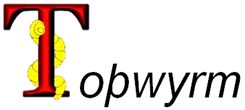Abstracts from Poster Presentations at the Scottish Dental Practice-Based Research Network's Symposium held in Edinburgh in November 2001These abstracts were first published in the journal Tuith Online. Further symposium reports may be made available for viewing on the Scottish Dental PBRN website.Symposium ReportAbstract of poster presentationThe Cost of Out-of-Hours emergency Dental Provision in Tayside:An assessment of the current situation and a proposal ofa more cost effective system.June D Fraser*; C. Tilley; J. Clarkson; J. Newton Part time MDSc in Primary Dental Care. BackgroundThe General Dental Services (GDS) contract of 1990 formalised the provision of emergency, out-of-hours treatment for NHS patients. If contacted outside normal surgery hours by a registered patient the GDP is required to offer advice and reassurance by telephone or to reopen the surgery. If seen out of hours, the GDP is paid a recalled dental attendance fee for re-opening the surgery at no cost to the patient. At present, for non-registered patients in Tayside, an emergency dental service (EDS) clinic runs at Ninewells Hospital over weekends and public holidays. During working hours on weekdays they can attend the Dental Hospital in Dundee. There is no dedicated out-of-hours dental provision for non-registered patients in Tayside. Throughout the region these people may also be seen by local Community Dental Offcers (CDOs), dental/medical practitioners, or at the A&E dept at Ninewells Hospital or Perth Royal Infirmary. Aim:The aim of this project is to compare two different models of delivery of emergency (out-of-hours) dental treatment, and suggest which would be more cost effective and appropriate to the providers of this service. Objectives:The project's objectives are to:
Methods:
Findings:Data collected to date are being analysed and results are in the process of being presented. Relevance for Policy & Practice:
References:
Correspondence address: East March,Duntrune, By Dundee, Angus DD4 0PP Email: auntiejune@tesco.net |
|
Web space provided by the University of Dundee,
maintained by
the Dental Health Services Research Unit. Valid XHTML1.0
|
 |
Evidence-based dentistry web-site | |